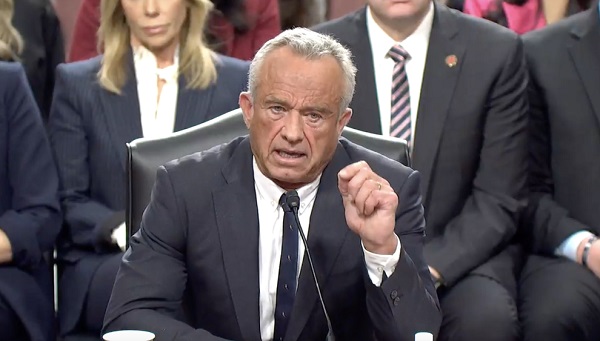Alberta
Building the Canada we want. An alternate approach to “wexit” sentiments

Submitted by Scott Cameron
Canada Chats: Building the Canada we want – An alternate approach to the “wexit” sentiments #visioncanada2119
Back in the eighties, I had a maple leaf proudly stitched onto the back of my new SunIce jacket and headed over to Europe. I wanted my Canadian identity to be prominent and unmistakable. I still feel that way, and amid the hurt, anger, fear and frustration being felt across the country I’m not ready to throw in the towel.
For some, the pioneer spirit is taking hold and guiding people to consider forging a new path – to boldly break ties with our Canadian family and embark on a new journey – alone. I’ve lived in Alberta all my life, and I’ve heard separatist sentiments in the past, but this feels different.
I tried running away from my family once. I think I was six. Frustrated and angry about a decision, I threw a few things into a bag and marched out the door. Not sure I was more than 150 feet from the house before a new perspective began to emerge. The difference here is that comments are beginning to emerge that go beyond emotion – some people are actually trying to figure out what that might look like.
I don’t think we’ve really exhausted our efforts to pull Canada together. I don’t like the Alberta chatter about leaving confederation in the same way that I didn’t (and still don’t) want Quebec to leave.
I don’t like the idea of leaving my friends in Ontario, Manitoba and Saskatchewan stranded between two former reflections of themselves to represent Canada – and all that we share as a nation. I want to believe that the majority of Canadians from coast to coast to coast want to keep Canada whole.
Under all our raw emotions, I think Canadians have more in common than we have differences. We might disagree about ‘how’ we’re going to protect the planet while exporting raw goods, ‘how’ we best take care of people in need while encouraging a strong economy and keeping people employed, or even ‘how’ we finally accept that both Ontario and BC make amazing wines – we don’t have to determine that one is better that the other – they’re both Canadian.
I want to encourage you to reach out beyond your comfort level and engage in a discussion about the future of this great nation. Call your friend in New Brunswick, Ontario or Alberta and ask them if they’d like to keep Canada whole. Bravely engage in a conversation with your aunt in the Lower Mainland about her environmental views. Be curious. Be courteous. Be patient. Have the conversation with your neighbour in #timhortons – it could become the new centre for Canadian democracy – #cafeofcommons.
Take the time to listen for understanding. Suspend your urge to prepare a defence while they’re speaking. Be prepared to leave the conversation without expressing your views unless asked. I met with a young communications student from the University of
Calgary this week. We had a coffee conversation about what these conversations could do for the country. We talked about social media, appreciative inquiry, the fact that everything seems to be positioned to create controversy because of its polarity, and he suggested that we might start by envisioning a unified Canada 100 years from now – 2119.
You know, I’m of the age that grandchildren would we a welcome addition to the family. I want them to grow up in a prosperous, clean, considerate and unified Canada – the best place on the planet to raise a family. I’m extending an invitation to you – my fellow Canadians – to engage in a conversation that’s aspirational and unifying – one that makes it possible for our future generations to be proud to wear the maple leaf.
Admit it, feels pretty darned amazing to watch our young athletes stand atop the world stage every four years as we hear our national anthem play. I don’t want our negative emotions to get in the way of that – I want my grandkids to experience that for themselves. Let’s exercise respect, integrity and curiosity to make Canada truly amazing. I’m inviting you to join the conversation at #visioncanada2119.
Scott Cameron is the President/CEO of bassa Social Innovations – a consulting firm dedicated to improving the quality of life for individuals, families and communities. As a community development professional, Scott understands and appreciates the value of dialogue and community engagement. He often finds himself in the midst of complexity yet remains optimistic about the future because he believes in the inherent ‘good’ among people – the desire to be good neighbours and to find collaborative solutions for some of our most challenging issues.
Alberta
Red Deer Justice Centre Grand Opening: Building access to justice for Albertans

The new Red Deer Justice Centre will help Albertans resolve their legal matters faster.
Albertans deserve to have access to a fair, accessible and transparent justice system. Modernizing Alberta’s courthouse infrastructure will help make sure Alberta’s justice system runs efficiently and meets the needs of the province’s growing population.
Alberta’s government has invested $191 million to build the new Red Deer Justice Centre, increasing the number of courtrooms from eight to 12, allowing more cases to be heard at one time.
“Modern, accessible courthouses and streamlined services not only strengthen our justice
system – they build safer, stronger communities across the province. Investing in the new Red Deer Justice Centre is vital to helping our justice system operate more efficiently, and will give people in Red Deer and across central Alberta better access to justice.”

Government of Alberta and Judiciary representatives with special guests at the Red Deer Justice Centre plaque unveiling event April 22, 2025.
On March 3, all court services in Red Deer began operating out of the new justice centre. The new justice centre has 12 courtrooms fully built and equipped with video-conference equipment to allow witnesses to attend remotely if they cannot travel, and vulnerable witnesses to testify from outside the courtroom.
The new justice centre also has spaces for people taking alternative approaches to the traditional courtroom trial process, with the three new suites for judicial dispute resolution services, a specific suite for other dispute resolution services, such as family mediation and civil mediation, and a new Indigenous courtroom with dedicated venting for smudging purposes.
“We are very excited about this new courthouse for central Alberta. Investing in the places where people seek justice shows respect for the rights of all Albertans. The Red Deer Justice Centre fills a significant infrastructure need for this rapidly growing part of the province. It is also an important symbol of the rule of law, meaning that none of us are above the law, and there is an independent judiciary to decide disputes. This is essential for a healthy functioning democracy.”
“Public safety and access to justice go hand in hand. With this investment in the new Red Deer Justice Centre, Alberta’s government is ensuring that communities are safer, legal matters are resolved more efficiently and all Albertans get the support they need.”
“This state-of-the-art facility will serve the people of Red Deer and surrounding communities for generations. Our team at Infrastructure is incredibly proud of the work done to plan, design and build this project. I want to thank everyone, at all levels, who helped make this project a reality.”
Budget 2025 is meeting the challenge faced by Alberta with continued investments in education and health, lower taxes for families and a focus on the economy.

Quick facts
- The new Red Deer Justice Centre is 312,000 sq ft (29,000 m2). (The old courthouse is 98,780 sq ft (9,177 m2)).
- The approved project funding for the Red Deer Justice Centre is about $191 million.
Alberta
Made in Alberta! Province makes it easier to support local products with Buy Local program

Show your Alberta side. Buy Local. |
When the going gets tough, Albertans stick together. That’s why Alberta’s government is launching a new campaign to benefit hard-working Albertans.
Global uncertainty is threatening the livelihoods of hard-working Alberta farmers, ranchers, processors and their families. The ‘Buy Local’ campaign, recently launched by Alberta’s government, encourages consumers to eat, drink and buy local to show our unified support for the province’s agriculture and food industry.
The government’s ‘Buy Local’ campaign encourages consumers to buy products from Alberta’s hard-working farmers, ranchers and food processors that produce safe, nutritious food for Albertans, Canadians and the world.
“It’s time to let these hard-working Albertans know we have their back. Now, more than ever, we need to shop local and buy made-in-Alberta products. The next time you are grocery shopping or go out for dinner or a drink with your friends or family, support local to demonstrate your Alberta pride. We are pleased tariffs don’t impact the ag industry right now and will keep advocating for our ag industry.”
Alberta’s government supports consumer choice. We are providing tools to help folks easily identify Alberta- and Canadian-made foods and products. Choosing local products keeps Albertans’ hard-earned dollars in our province. Whether it is farm-fresh vegetables, potatoes, honey, craft beer, frozen food or our world-renowned beef, Alberta has an abundance of fresh foods produced right on our doorstep.
Quick facts
- This summer, Albertans can support local at more than 150 farmers’ markets across the province and meet the folks who make, bake and grow our food.
- In March 2023, the Alberta government launched the ‘Made in Alberta’ voluntary food and beverage labelling program to support local agriculture and food sectors.
- Through direct connections with processors, the program has created the momentum to continue expanding consumer awareness about the ‘Made in Alberta’ label to help shoppers quickly identify foods and beverages produced in our province.
- Made in Alberta product catalogue website
Related information
-

 Business2 days ago
Business2 days agoTrump considers $5K bonus for moms to increase birthrate
-

 Business2 days ago
Business2 days agoChinese firm unveils palm-based biometric ID payments, sparking fresh privacy concerns
-

 COVID-192 days ago
COVID-192 days agoRFK Jr. Launches Long-Awaited Offensive Against COVID-19 mRNA Shots
-

 2025 Federal Election1 day ago
2025 Federal Election1 day agoConservatives promise to ban firing of Canadian federal workers based on COVID jab status
-

 Business1 day ago
Business1 day agoIs Government Inflation Reporting Accurate?
-

 2025 Federal Election1 day ago
2025 Federal Election1 day agoCarney’s Hidden Climate Finance Agenda
-

 Environment1 day ago
Environment1 day agoExperiments to dim sunlight will soon be approved by UK government: report
-

 2025 Federal Election1 day ago
2025 Federal Election1 day agoStudy links B.C.’s drug policies to more overdoses, but researchers urge caution







